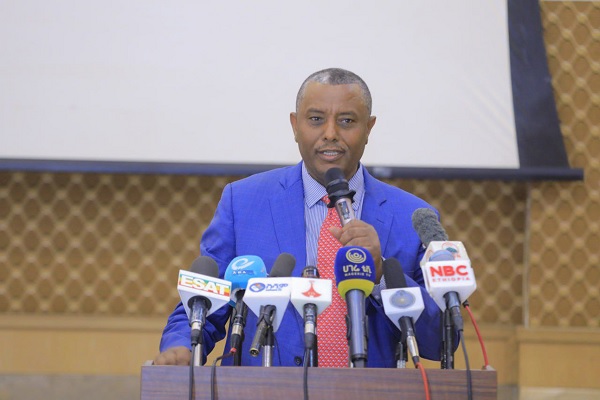
ADAMA – The Ethiopian Meteorology Institute (EMI) has urged stakeholders to capitalize on seasonal climate forecasts to drive national development and mitigate climate change-induced disasters.
During a seasonal climate outlook forum held yesterday, the Institute reviewed forecasts for the Belg season and unveiled climate predictions for the upcoming Kiremt season, which spans June to September (JJAS).
Speaking at the event, EMI Director General Fetene Teshome emphasized the Institute’s commitment to minimizing the impacts of climate change on the socio-economic sector through the delivery of accurate and timely weather forecasts, made possible by its skilled workforce and advanced technologies.
Fetene noted that the Kiremt season contributes about 85 percent of Ethiopia’s annual rainfall in key states, and this year, above-normal rainfall is anticipated across many of these areas. This increased precipitation is expected to provide significant benefits for irrigation, hydroelectric dams, and environmental conservation.
However, he also cautioned about the potential risks associated with the heavy rains, including river overflows, flash floods, waterlogging on farmlands, and a rise in mosquito breeding. To address these concerns, he called on stakeholders to strengthen drainage infrastructure, reduce flood vulnerabilities, and implement mosquito control measures. Additionally, he urged the effective use of rainfall to benefit sectors such as health, agriculture, and industry, thereby contributing to national progress.
EMI Deputy Director General Asaminew Teshome (PhD) further elaborated that several states, particularly those reliant on the Kiremt season, are expected to experience above-normal rainfall from June to September.
According to him, states forecasted to receive higher-than-average rainfall include Central and South Tigray, Afar, East Amhara, the northern Somali state, and eastern parts of the country. Western Tigray, West Amhara, Benishangul-Gumuz, Western Oromia, Gambella, and the southwestern state will also see above-normal precipitation.
Meanwhile, near-normal to normal rainfall is expected in the Somali State, Guji and Borena zones, as well as in southern Ethiopia and the Sidama State.
Asaminew added that the anticipated rainfall would enhance water availability, improve pasture conditions, and boost fodder and grass supplies for livestock in pastoral areas.
BY YOHANES JEMANEH
THE ETHIOPIAN HERALD SATURDAY 24 MAY 2025




